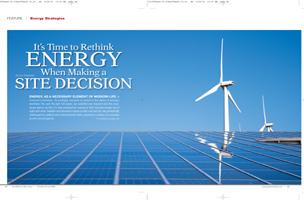

Energy, as a necessary element of modern life, is everyone’s business. Accordingly, everyone is vested in the status of energy’s dominion. Yet, over the last 100 years, our watchful eye required only the occasional glance as the U.S was powered by resources that churned largely out of sight and mind. Reliable and abundant resources like coal and oil, only periodically challenged by political and environmental strife, powered a century of economic growth and prosperity.
Perhaps the comforts our good fortune brought make it difficult now to pay careful attention to new realities that maneuver energy in an increasingly complex world. These complexities require informed consumers, including corporate managers who make location decisions for new investments, to ensure that energy remains reliable and costs are in line with industry needs.
New energy will see prices rise and per capita use decline, a broad mix of both centralized and distributed production, and frequent volatile movements in markets that all require attention. It’s time to examine the changing energy landscape - global energy production, transmission and use – and what these mean to savvy business organizations.
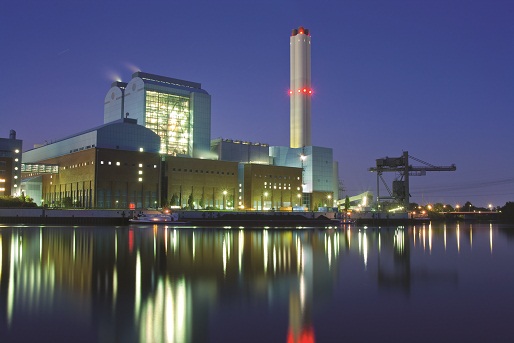 Growing Demand for Energy
Growing Demand for Energy
Energy markets are some of the most complex markets we face. Energy is influenced not only by simple supply and demand constraints, but also dense layers of regulation, convoluted geo-politics and ever-evolving technologies. Over recent decades, global energy markets have exhibited increased demand, increased competition for resources and higher prices. When making an investment decision for new production facilities, business managers should keep a keen eye on this unfolding global ballet.
Global demand for energy is expected to double over the next 20 years as countries around the world, particularly in Asia and South America, experience rapid economic growth. A characteristic of economic growth important to energy markets is increasing urbanization. As economies shift from a rural agricultural base to an urban industrial base energy demand rises quickly.
According to a report published by the United Nations (“World Urbanization Prospects: The 2011 Revision”), about half of the world’s 7.0 billion people now live in urban areas. By 2050, the world population is expected to increase by 2.3 billion, passing from 7.0 billion to 9.3 billion. At the same time, the population living in urban areas is projected to gain 2.6 billion, passing from 3.6 billion in 2011 to 6.3 billion in 2050 - nearly 70 percent residing in urban areas.
While China alone has over 100 cities of one million people or more who demand electricity for household appliances and gasoline for cars, the mature industrial economies, Japan and the United States for instance, should expect a much slower rate of growth in total energy use. According to the “Annual Energy Outlook 2012” (“AOE2012’) report issued by the U.S. Energy Information Administration (EIA), energy consumption per capita is expected to decline by an average of 0.6 percent per year from 2010 to 2035. The modest overall growth in total demand reflects a moderate population growth, an extended economic recovery and increasing energy efficiency in end-use applications. Projected energy demand for transportation is expected to grow at an annual rate of 0.1 percent from 2010 through 2035, reflecting continual improvement in vehicle fuel mileage.
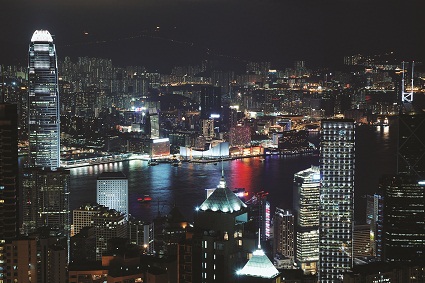 Lower per capita energy use, growth in domestic production of petroleum and continued adoption of nonpetroleum liquids (biofuels, for example) collectively mean that net imports of petroleum and other liquids will make up a smaller share of total U.S. energy consumption in the coming years. EIA estimates that total U.S. consumption of petroleum and other liquids fuels, including fossil fuels and biofuels, will rise from 19.2 million barrels per day in 2010 to 19.9 million barrels per day in 2035.
Lower per capita energy use, growth in domestic production of petroleum and continued adoption of nonpetroleum liquids (biofuels, for example) collectively mean that net imports of petroleum and other liquids will make up a smaller share of total U.S. energy consumption in the coming years. EIA estimates that total U.S. consumption of petroleum and other liquids fuels, including fossil fuels and biofuels, will rise from 19.2 million barrels per day in 2010 to 19.9 million barrels per day in 2035.
If there is a game-changer on the horizon for the domestic energy landscape it’s natural gas. Domestic natural gas production is expected to increase over the next 20 years and beyond. Once environmental concerns that surround horizontal fracturing drilling technologies are addressed, many regions of the U.S. should see an explosion in the number of production wells. This will allow the United States to transition from being a net importer of natural gas to a net exporter.
Natural gas is viewed by many as the “transition fuel” to a new and cleaner energy economy. While coal-fired power plants have been the workhorse for over 100 years, they come with baggage. Emissions that are harmful to the environment include sulfur dioxides, heavy metals like mercury and climate-changing carbon dioxide. Natural gas is a much cleaner fuel and has other technical advantages.
Natural-gas-powered electric generation can ramp up from a cold start in a relative flash compared to slower-responding coal plants. This allows the grid to more efficiently adjust to daily production peaks and to operate more harmoniously with renewable energy technologies that are intermittent. We should expect power generation from renewable sources to parallel the growth of natural gas baseload generation. EIA forecasts that the natural gas share of electric power generation will increase from 24 percent in 2010 to 28 percent in 2035, while renewable power will grow from 10 percent to 15 percent of total energy production in the U.S.
In contrast, the share of generation from coal-fired power plants is expected to decline. An historical reliance on coal-fired power plants in the U.S. electric power sector has begun to wane in recent years. Over the next 25 years, the share of electricity generation from coal will likely fall to 38 percent, well below the 48-percent share seen as recently as 2008, due in part to increased competition from natural gas and renewable generation.
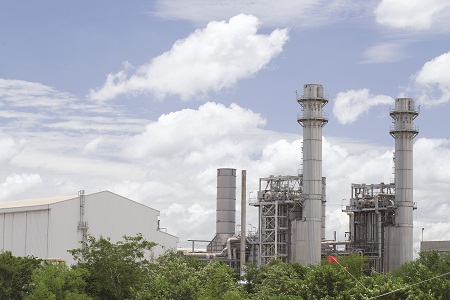 Rising Costs and Market Volatility
Rising Costs and Market Volatility
According to the EIA (“Annual Energy Outlook 2011” report), the price of all energy will double over the next 20 years led largely by petroleum, coal and nuclear. There are obvious reasons. For one, the growing demand for petroleum around the globe strains supplies and is driving up prices. As for electric power, stricter regulation of mercury and other pollutants under the Clean Air Act require expensive upgrades to power plants, refineries and boilers. The Cross-State Air Pollution Rule (CSAPR) finalized by the EPA in July 2011 and the Mercury and Air Toxics Standards (MATS) rule issued by the EPA in December 2011 will trigger billions of dollars in plant upgrades.
Not all power plants will make the technology upgrade, however. For many of the 600+ coal power plants in the U.S., the expense of upgrading is not justified and approximately 200 of the older plants will be decommissioned in the coming years. Similarly, many of the 100+ nuclear plants in the U.S. fleet are nearing the end of their designed life and must either be decommissioned or upgraded. The high cost of upgrading coal and nuclear plants means higher costs to the consumer in the coming decades.
 New coal and nuclear plants can be designed to employ modern technologies that improve on the safety and efficiency of older designs. For instance, integrated gasification combined cycle (IGCC) coal plants produce electricity in a fundamentally different process than traditional pulverized coal plants. The process starts by heating coal under pressure to create a methane-rich gas, which, after cleaning, can be used in a combined-cycle unit (gas and steam turbines) for efficient electricity generation. IGCC plants offer significant reductions in “criteria pollutants” (six common pollutants of concern) and the ability to capture carbon emissions (CCS – carbon capture and sequestration) more efficiently than at pulverized coal plants.
New coal and nuclear plants can be designed to employ modern technologies that improve on the safety and efficiency of older designs. For instance, integrated gasification combined cycle (IGCC) coal plants produce electricity in a fundamentally different process than traditional pulverized coal plants. The process starts by heating coal under pressure to create a methane-rich gas, which, after cleaning, can be used in a combined-cycle unit (gas and steam turbines) for efficient electricity generation. IGCC plants offer significant reductions in “criteria pollutants” (six common pollutants of concern) and the ability to capture carbon emissions (CCS – carbon capture and sequestration) more efficiently than at pulverized coal plants.
By comparison, construction costs for a natural gas combined-cycle electric plant is relatively inexpensive. According to the EIA “AEO2011,” the cost per kilowatt (kW) for a new natural gas combined-cycle plant is less than 20 percent of that of an IGCC/CCS plant. At the same time, the cost of renewable energy production facilities continues to decline as much as five percent per year, as better technologies emerge and manufacturing scales-of-economy are reached (see table).
Unpredictable operating conditions are a threat to operating a successful business. As energy markets globalize, the volatility in prices and supplies has increased in frequency and intensity.
 Adapting Business to the Energy Challenge
Adapting Business to the Energy Challenge
Economic survival has always been about adapting to change. Correctly interpreting signals about technology, competitor actions, government regulations, resource availability and commodity prices, to name a few, consistently lie at the center of successful business organizations. Attention to the subtleties of comprehensive energy awareness is now part of the business game.
A useful approach is to consider the guiding principles of sustainability. Sustainability as a business practice has emerged as an effective approach for companies operating in an uncertain world. Once considered a domain of the environmental movement, sustainability is now viewed as the next generation of good business practices.
Corporations adopting sustainability’s three-legged stool of people, planet and profit aim for long-term viability by optimizing resource needs, reducing environmental, energy and social impacts, and managing resources while not compromising profitability.
In practice, companies that have pursued improved production scheduling and adopted energy management systems and energy-efficient technologies have seen energy’s share of total cost reduced despite rising energy prices. For the U.S. economy as a whole, the projected share of GDP of energy expenditures is expected to fall, beginning last year through 2035, averaging 7.5 percent, which is below the historical average of 8.8 percent from 1970 to 2010. This shift reflects smarter use of energy.
 The Smart Grid
The Smart Grid
Just as electric power touches all corners of the world, so too will the new energy age ushered in with digital modernization. Profound changes lie ahead in the way we produce, distribute and use electricity, and the smart grid is the glue that holds the new world together.
Today’s power system is largely centralized and managed around a relatively small number of large power plants designed to distribute power in one direction – out to the consumer. The system was designed at a time when energy was cheap and externalities like consumer choice and the natural environment weren’t priorities.
As long as power remained cheap, plentiful and otherwise socially benign, an inefficiency and wasteful power system was easily tolerated. Under the current system, millions of devices draw power even when they aren’t being used. And lacking real-time demand-curve information, electric utilities are required to maintain substantial “spinning reserves” on stand-by. Consequently, billions of dollars are wasted generating energy that never reaches a single light bulb or provides value once it arrives at a dormant device. Enough electricity is lost annually in the world to power India, Germany and Canada for an entire year.
Under a smart grid, the power system is imbued with intelligent monitoring systems – devices in homes and factories, on distribution lines and substations, in the transmission system, and at centralized and distributed power sources. These devices keep track of electricity flowing in the system. With this information, dynamic pricing signals can be produced reflecting the real cost of power at points in time.
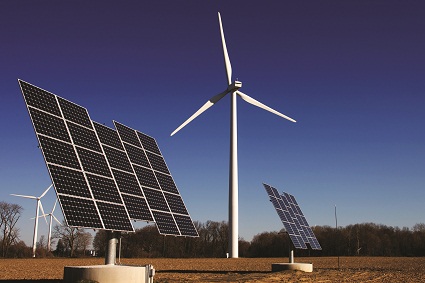 With pricing information, the consumer is empowered with the ability to make choices, effectively putting to work the "invisible hand" of free-market capitalism. Residential and industrial consumers will have the ability to automatically turn on and off appliances and factory processes based on pre-set parameters for cost tolerance and device criticality. The key to the smart grid is the ability to support two-way communication between users and producers.
With pricing information, the consumer is empowered with the ability to make choices, effectively putting to work the "invisible hand" of free-market capitalism. Residential and industrial consumers will have the ability to automatically turn on and off appliances and factory processes based on pre-set parameters for cost tolerance and device criticality. The key to the smart grid is the ability to support two-way communication between users and producers.
A characteristic of the new energy landscape is how technologies and markets are interlaced. The smart grid provides a mechanism for accommodating generation alternatives like solar, wind and geothermal. The smart grid also provides an opportunity for increased protection from cyber attack and will facilitate the incorporation of power storage.
Location Selection and the New Energy Landscape
A lack of continuity in government policy and the 50-state fragmentation of utility regulation have created an uneven landscape when it comes to energy. Recognizing the inevitability of a more complex and expensive energy landscape, companies are urged to locate in places that are positioned to meet the changing demands of business.
The expected uneven adoption of smart grid technologies across the country, for one, should be viewed as an important distinction between locations. Areas where smart grid development is occurring will allow businesses to better manage energy reliability and costs; those areas that aren’t, won’t.
